Six graphs the Bank of England will study before August interest rate decision
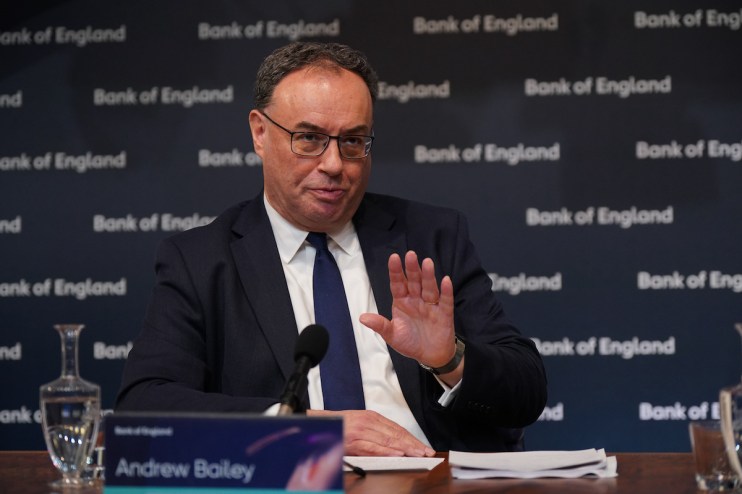
For the first time since last September, there is genuine uncertainty about the Bank of England’s next move on interest rates.
The Monetary Policy Committee (MPC) will meet next Thursday, with markets putting the odds of a cut at about 40 per cent.
There’s enough evidence of disinflation to warrant a cut. Similarly, more hawkish members can also justifiably argue that rates need to be left on hold for just a little bit longer.
So what will factor in the decision for rate-setters?
Inflation
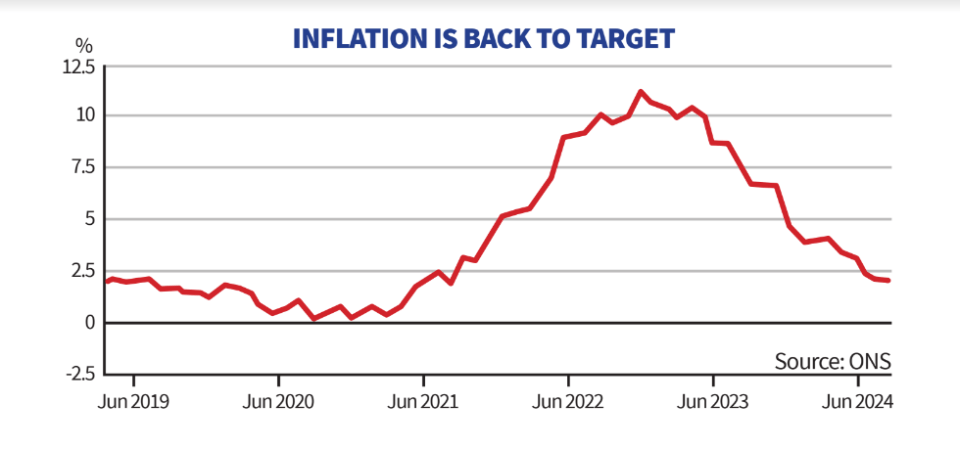
The headline rate of inflation fell to the two per cent target in May for the first time since July 2021, having peaked at over 11 per cent in the autumn of 2022.
The relatively rapid progress on inflation was enabled by falling energy prices and much lower food inflation as global energy markets normalised in the wake of Russia’s invasion of Ukraine.
The Bank of England expects the headline rate of inflation to pick up slightly before the end of the year, but it won’t come anywhere near the peaks of last year. With inflation likely to remain at or near the target, markets expect an interest rate cut in the near future.
Services inflation
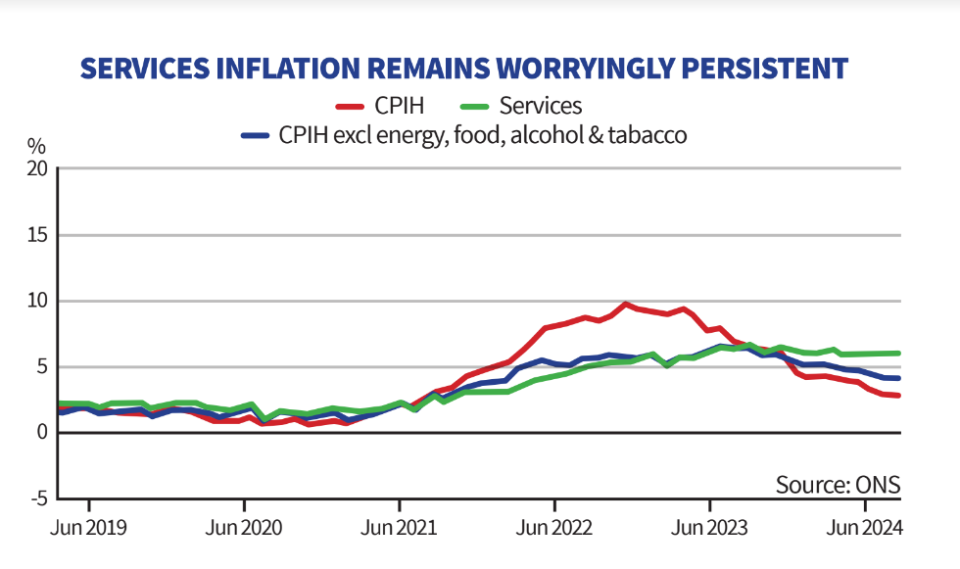
Although inflation has come back down to target, services inflation remains worryingly persistent and does not yet show signs of normalising. The latest figures showed it remained stuck at 5.7 per cent in June.
Rate-setters view services inflation as a good gauge of domestic inflationary pressures because it includes many of the sectors which are most important for domestic consumers, such as spending on recreation and holidays.
Back in May, the Bank of England forecast that services inflation would have fallen to 5.3 per cent, meaning it is running comfortably ahead of rate-setters’ expectations. This is a cause for concern.
Wage growth
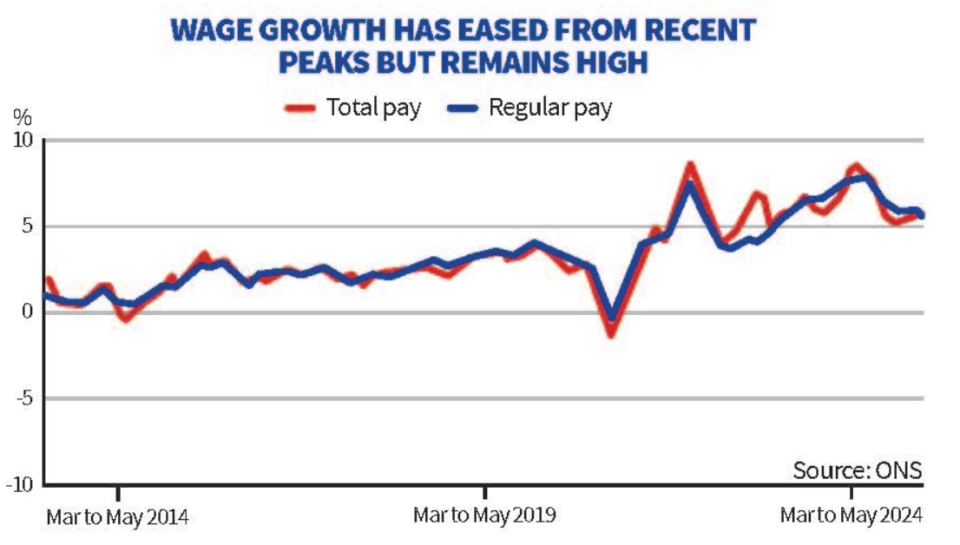
Another headache for the Bank is stubborn wage growth. Like services inflation, the latest figures put annual pay growth at 5.7 per cent.
While this is down from nearer eight per cent last summer, it is still nearly double the level consistent with inflation remaining sustainably at two per cent.
Strong wage growth is likely to contribute to sticky price pressures in the services sector and so MPC members might be wary of cutting rates while pay pressures remain so strong.
GDP

The economy has comfortably outperformed expectations this year, growing at 0.7 per cent in the first quarter. A number of economists have bumped up their forecasts for the remainder of the year on the back of this strong performance.
However, stronger than expected growth may tilt the balance towards a hold in August as the economy appears to be growing at or near its potential output. This could put some upward pressure on prices.
There is also less urgency to cut interest rates when the economy is growing at its fastest pace in nearly two years.
Unemployment
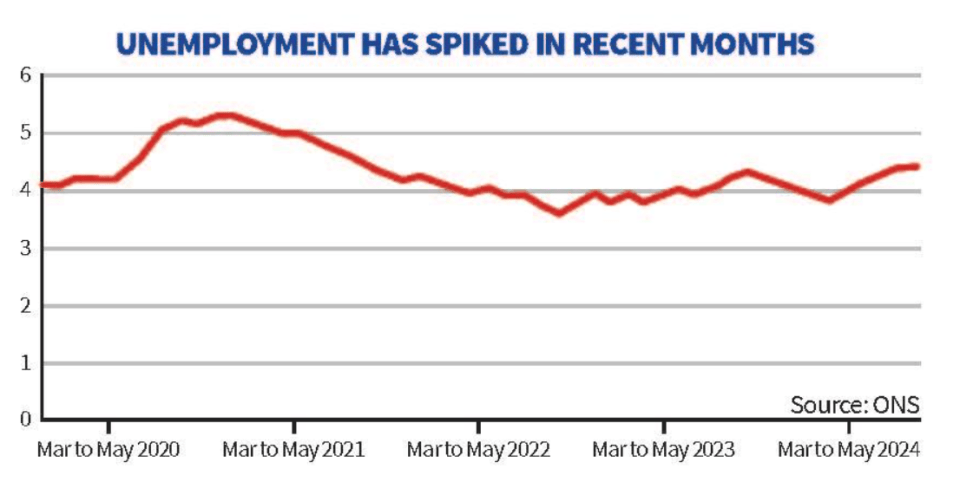
Unemployment has increased for four consecutive months, rising from 3.8 per cent at the end of 2023 to 4.4 per cent, meaning an extra 190,000 people are out of a job.
Sooner or later, rising unemployment should filter through into weaker wage growth, because there’s more competition for jobs. There’s some indications that this might be happening.
A Bank of England survey also showed that firms expect wage growth to slow in the year ahead. Expected wage growth edged lower to 4.0 per cent, down from 4.1 per cent and the lowest level since the question was asked back in May 2022.
Services producer prices

Forward looking indicators also suggest that services inflation could fall in the months ahead. An ONS survey of how much firms in the service sector are passing on higher costs fell from 3.7 per cent in the first quarter to 3.1 per cent in the second, suggesting firms are absorbing higher costs.
“If the usual correlation holds then you would expect CPI services to come down in the coming months as well,” Grant Fitzner, chief economist at the ONS said.
So while services inflation and wage growth are both running too hot for comfort, there’s good reason to think they will fall soon. Whether rate-setters will want more evidence remains to be seen.